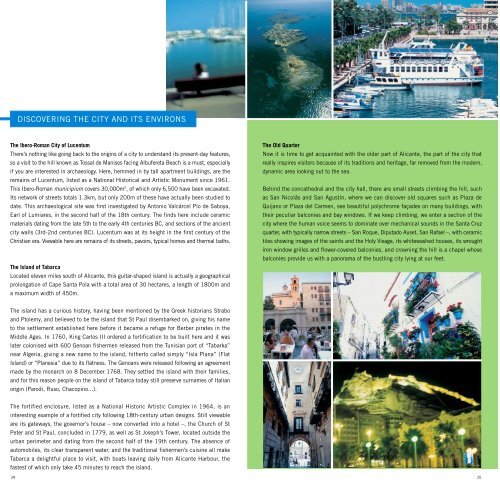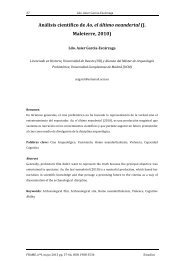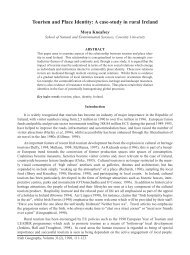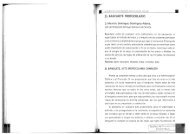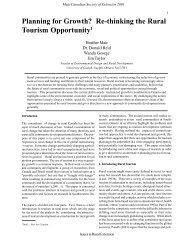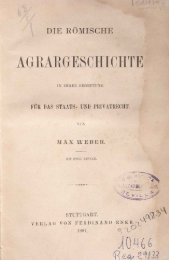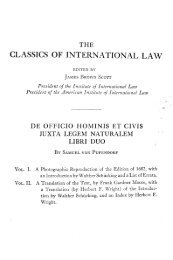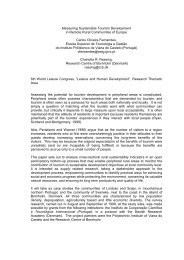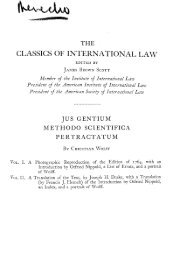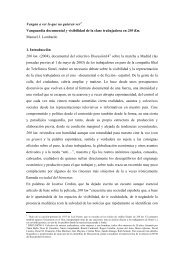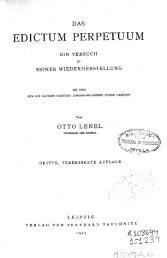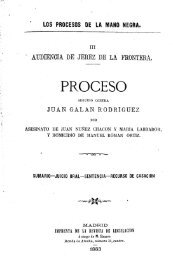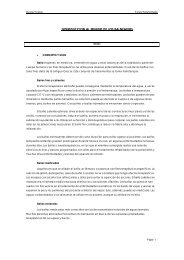Alicante Step by step - Universidad de Sevilla
Alicante Step by step - Universidad de Sevilla
Alicante Step by step - Universidad de Sevilla
You also want an ePaper? Increase the reach of your titles
YUMPU automatically turns print PDFs into web optimized ePapers that Google loves.
DISCOVERING THE CITY AND ITS ENVIRONS<br />
The Ibero-Roman City of Lucentum<br />
There’s nothing like going back to the origins of a city to un<strong>de</strong>rstand its present-day features,<br />
so a visit to the hill known as Tossal <strong>de</strong> Manises facing Albufereta Beach is a must, especially<br />
if you are interested in archaeology. Here, hemmed in <strong>by</strong> tall apartment buildings, are the<br />
remains of Lucentum, listed as a National Historical and Artistic Monument since 1961.<br />
This Ibero-Roman municipium covers 30,000m 2 , of which only 6,500 have been excavated.<br />
Its network of streets totals 1.3km, but only 200m of these have actually been studied to<br />
date. This archaeological site was first investigated <strong>by</strong> Antonio Valcárcel Pío <strong>de</strong> Saboya,<br />
Earl of Lumiares, in the second half of the 18th century. The finds here inclu<strong>de</strong> ceramic<br />
materials dating from the late 5th to the early 4th centuries BC, and sections of the ancient<br />
city walls (3rd-2nd centuries BC). Lucentum was at its height in the first century of the<br />
Christian era. Viewable here are remains of its streets, pavoirs, typical homes and thermal baths.<br />
The Island of Tabarca<br />
Located eleven miles south of <strong>Alicante</strong>, this guitar-shaped island is actually a geographical<br />
prolongation of Cape Santa Pola with a total area of 30 hectares, a length of 1800m and<br />
a maximum width of 450m.<br />
The island has a curious history, having been mentioned <strong>by</strong> the Greek historians Strabo<br />
and Ptolemy, and believed to be the island that St Paul disembarked on, giving his name<br />
to the settlement established here before it became a refuge for Berber pirates in the<br />
Middle Ages. In 1760, King Carlos III or<strong>de</strong>red a fortification to be built here and it was<br />
later colonised with 600 Genoan fishermen released from the Tunisian port of “Tabarka”<br />
near Algeria, giving a new name to the island, hitherto called simply “Isla Plana” (Flat<br />
Island) or “Planesia” due to its flatness. The Genoans were released following an agreement<br />
ma<strong>de</strong> <strong>by</strong> the monarch on 8 December 1768. They settled the island with their families,<br />
and for this reason people on the island of Tabarca today still preserve surnames of Italian<br />
origin (Parodi, Ruso, Chacopino...).<br />
The fortified enclosure, listed as a National Historic Artistic Complex in 1964, is an<br />
interesting example of a fortified city following 18th-century urban <strong>de</strong>signs. Still viewable<br />
are its gateways, the governor’s house – now converted into a hotel –, the Church of St<br />
Peter and St Paul, conclu<strong>de</strong>d in 1779, as well as St Joseph’s Tower, located outsi<strong>de</strong> the<br />
urban perimeter and dating from the second half of the 19th century. The absence of<br />
automobiles, its clear transparent water, and the traditional fishermen’s cuisine all make<br />
Tabarca a <strong>de</strong>lightful place to visit, with boats leaving daily from <strong>Alicante</strong> Harbour, the<br />
fastest of which only take 45 minutes to reach the island.<br />
The Old Quarter<br />
Now it is time to get acquainted with the ol<strong>de</strong>r part of <strong>Alicante</strong>, the part of the city that<br />
really inspires visitors because of its traditions and heritage, far removed from the mo<strong>de</strong>rn,<br />
dynamic area looking out to the sea.<br />
Behind the concathedral and the city hall, there are small streets climbing the hill, such<br />
as San Nicolás and San Agustín, where we can discover old squares such as Plaza <strong>de</strong><br />
Quijano or Plaza <strong>de</strong>l Carmen, see beautiful polychrome faça<strong>de</strong>s on many buildings, with<br />
their peculiar balconies and bay windows. If we keep climbing, we enter a section of the<br />
city where the human voice seems to dominate over mechanical sounds in the Santa Cruz<br />
quarter, with typically narrow streets – San Roque, Diputado Auset, San Rafael –, with ceramic<br />
tiles showing images of the saints and the Holy Visage, its whitewashed houses, its wrought<br />
iron window grilles and flower-covered balconies, and crowning the hill is a chapel whose<br />
balconies provi<strong>de</strong> us with a panorama of the bustling city lying at our feet.<br />
24 25


